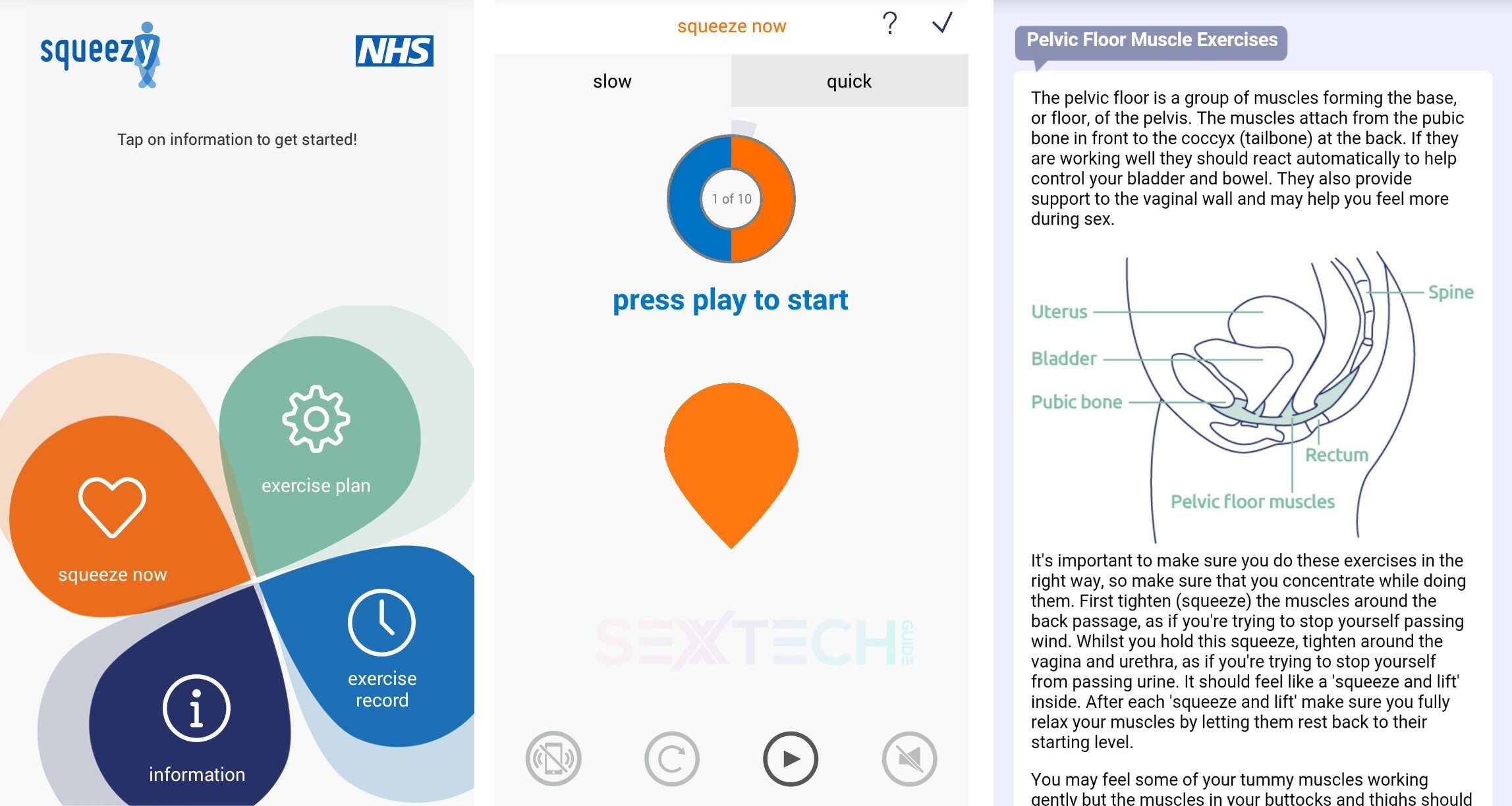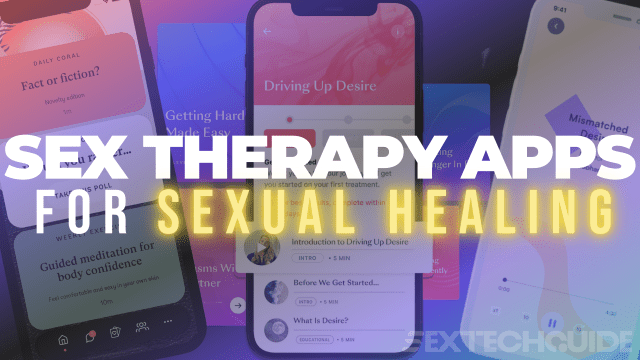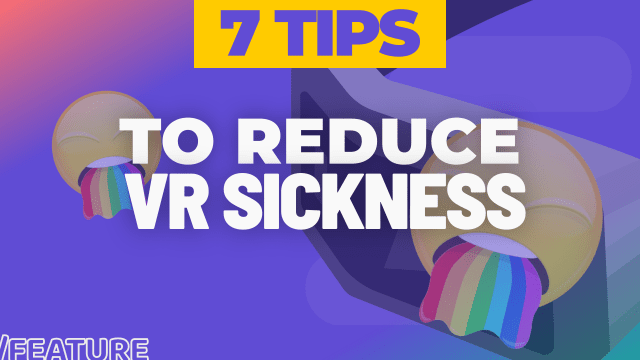The first Bluetooth app-controlled biofeedback kegel device I encountered was nearly a decade ago, back in the innocence of 2013. Since then the popularity of these sex and pelvic health tech devices has grown. They’re not only popular among those into gadgets, but many health professionals rave about the benefits of their effectiveness on combatting pelvic floor dysfunction, sexual dysfunction, and even mindfulness motivation around sexual wellbeing and pelvic health mindset.
Undertaking a sort of vaginal weightlifting, however, is nothing new: whether you know them as keggle balls, orgasm balls, rin-no-tama, Venus balls, Geisha balls or Ben Wa balls, they’re all roughly the same thing.
We spoke with Jane Simpson a Continence Nurse Consultant, author of Pelvic Floor Bible and an advisor on the Balance+ app helping individuals through peri-menopause and menopause.
“I think apps and tech have a very important role to play in pelvic floor health. It’s all very well to say to a group of [people] for that matter, let’s say in a Yoga, Pilates, antenatal or fitness class ‘now contract your pelvic floor’…with the main concern being ‘how do you know if you are using the right muscles?’ That’s where tech can help.”
Kegel devices and apps are in demand, with 1 in 3 cis women experiencing pelvic floor dysfunction according to the Mayo Clinic, the pelvic and incontinence industry is expected to be worth over $25 billion by 2026.
“Symptoms include losing a little bit of wee or passing wind involuntarily when coughing, sneezing or laughing. Issues during sex where you’re experiencing a decrease in sensation during penetration, feeling like you can’t grip your partner or that you’re not as tight as you once were, can all contribute to affecting women’s self-esteem and sexual confidence,” says Caz Hitchcock, a body movement and posture specialist who focuses on the pelvic floor.
Thankfully, however, Hitchcock also says that “app-controlled Kegel devices can work in various ways [to help]”.
As ever though, anyone experiencing these symptoms should seek support from their healthcare provider before taking any action.
“Apps and devices are not designed to be used without the support of a healthcare practitioner or therapist and are certainly not a ‘cure all’ that some marketing can allude to. This is particularly important if there has been any post-birth trauma, prolapse or any other condition that has required surgical or medical intervention,” Hitchcock adds.
Types of Kegel Apps and Biofeedback Devices
Pelvic Floor Apps
Mindfulness pelvic floor apps that help the user set reminders and give instructions on how to breathe when performing pelvic floor contractions correctly are non-invasive. These still work extremely well in helping motivate individuals with keeping on top of their pelvic health.
Simpson points out that it’s easy to forget to stay on top of our pelvic health and this is where apps can help. “The Apps can help us in our busy lives to remember to do our pelvic floor exercises, some of them have alerts that beep to remind you. How many of us are at this moment thinking, ‘Oh I must do my pelvic floor exercises’ but we are not. Why is this?”
Squeezy an NHS-recommended app that aims to help reduce pelvic floor issues and incontinence has had over 50 thousand downloads and is recommended by healthcare providers across the UK. It’s available for both Android and iOS devices, and costs £2.99 to download. There are versions ‘for men’, ‘for women’ and ‘for cystic fibrosis’, in order to help people get the most relevant information for their body.
Uncomplicated apps like Squeezy have been shown to be successful in helping individuals regain not only pelvic floor functions, but confidence and greater wellbeing due to easy to navigate mindfulness instructions.
With the ability to set targets and challenges on how many pelvic floor contractions you want to aim for, as well as the speed of contraction, the Squeezy app is pretty versatile and can be adapted to multiple peoples pelvic health goals and abilities.

Other apps focus on breathing, to work the diaphragm which moves in conjunction with the pelvic floor. The theory behind these, is that due to having busy lifestyles we often breathe in limited ways which may affect our pelvic floor function. Using apps that help to cue the user to contract their pelvic floor during different breathing methods can help some individuals learn how to squeeze and release the pelvic floor muscles, also known as the pubococcygeal (PC) muscles, correctly leading to better pelvic floor functionality.
“Using apps and devices that raise awareness and increase connection to the pelvic floor is
certainly a starting place to boost confidence and improve mental wellbeing. Improving how you feel about pelvic floor issues and feeling more informed often leads to asking more questions and seeking advice from the appropriate sources.” Hitchcock tells SEXTECHGUIDE.
Biofeedback Devices
Biofeedback devices are the gold standard of app-controlled kegel tech, where they not only give you visual cues on how to perform kegels, but some can sense how the pelvic floor is working during each movement. These devices can work by being inserted into the vagina or used externally and sending feedback to the app via Bluetooth.
With biofeedback devices, they can feel how strong and fast pelvic floor contractions are performing.
Certain devices can also distinguish different types of pelvic floor muscle contractions from fast twitch, to slow twitch, to even if someone is simply lifting the muscles up or bearing down with them.
If someone struggles relaxing their pelvic floor, app-controlled biofeedback devices such as the Elvie can even tell when someone contracts or relaxes their pelvic floor, or if they bear down, which can aggravate prolapse or incontinence. Bearing down too much during sex may make penetration harder as the muscles are unable to relax for insertion of sex toys or a penis.
The biofeedback devices can add elements of fun, adding further to motivation for consistent use. It’s not just about physical well-being but mental well-being too.
Many of the apps have incorporated arcade and retro style games to help you learn how to control your pelvic floor in different ways. Perifit is an app-controlled biofeedback pelvic device that has an option to play a Mario-esque style platform game as you squeeze and release your PC muscles.
When choosing a Kegel biofeedback device it’s important to shop around as everyone has different pelvic health needs. Hitchcock says, “then an effective treatment programme can be implemented, which could include an app, as they are brilliant for keeping you motivated. People have different learning styles, so finding an app which suits your particular method of learning is a good idea.”
Not only do these Kegel apps help improve your sex life by teaching you how to train your pelvic floor for better contractions, but some of these devices, such as the We-Vibe Bloom and G-Vibe Gballs also have the ability to act as a vibrator with the ability to excite the user to an orgasmic climax. Which can be a fun and motivational reward for after your Kegel workout.
Do Kegel Apps to Train You Pelvic Floor Work?
A study which reviewed over 15 years worth of pelvic floor muscle training research found that those who used pelvic floor tech and biofeedback devices had better success and improvement in their pelvic floor health, including sexual function.
These devices help individuals in cueing the correct pelvic floor muscles while acting as a motivator and reminder for users to stay on top of it.
They’re mobile motivators, according to one study published in BMC Nursing Journal. Biofeedback Kegel devices and pelvic health apps have been shown to be more successful than just telling someone to do their kegel exercises or getting individuals to use standard ‘jiggle balls’, which often get left in a bedside drawer gathering dust.
Many users who have explored pelvic health tech have reported better physical health and greater mental well-being, from using both app-controlled and biofeedback pelvic floor devices.
“I think the way we live our lives these days is so goal driven. Don’t we all love our Fitbit? Apps and pelvic floor devices give positive feedback and I am a huge fan of biofeedback for our mental and physical health. Seeing results on a graph or app is uplifting and gives us a spring in our step.” Simpson shares the positives she’s seen when people have used these devices.
In a world where other forms of biofeedback devices such as Fitbits for general fitness are successful, it makes sense that biofeedback and apps for pelvic health work just as well. From helping individuals to reach their pelvic floor and even sexual well-being goals, they’re multi-functionality proves beneficial and will continue to provide both mental and physical strength.
Read Next: Best Sex Tech for Vulvas








Leave a Reply